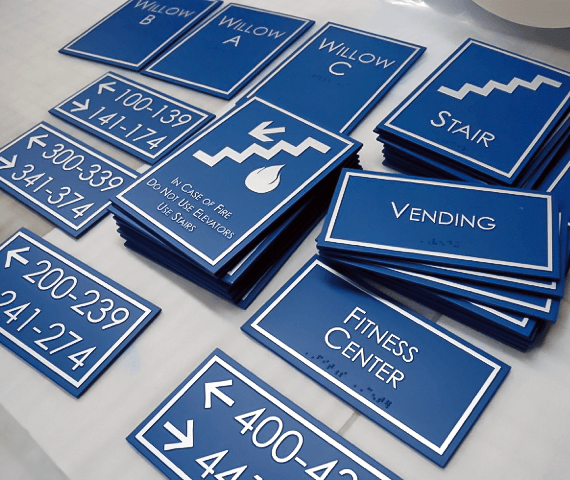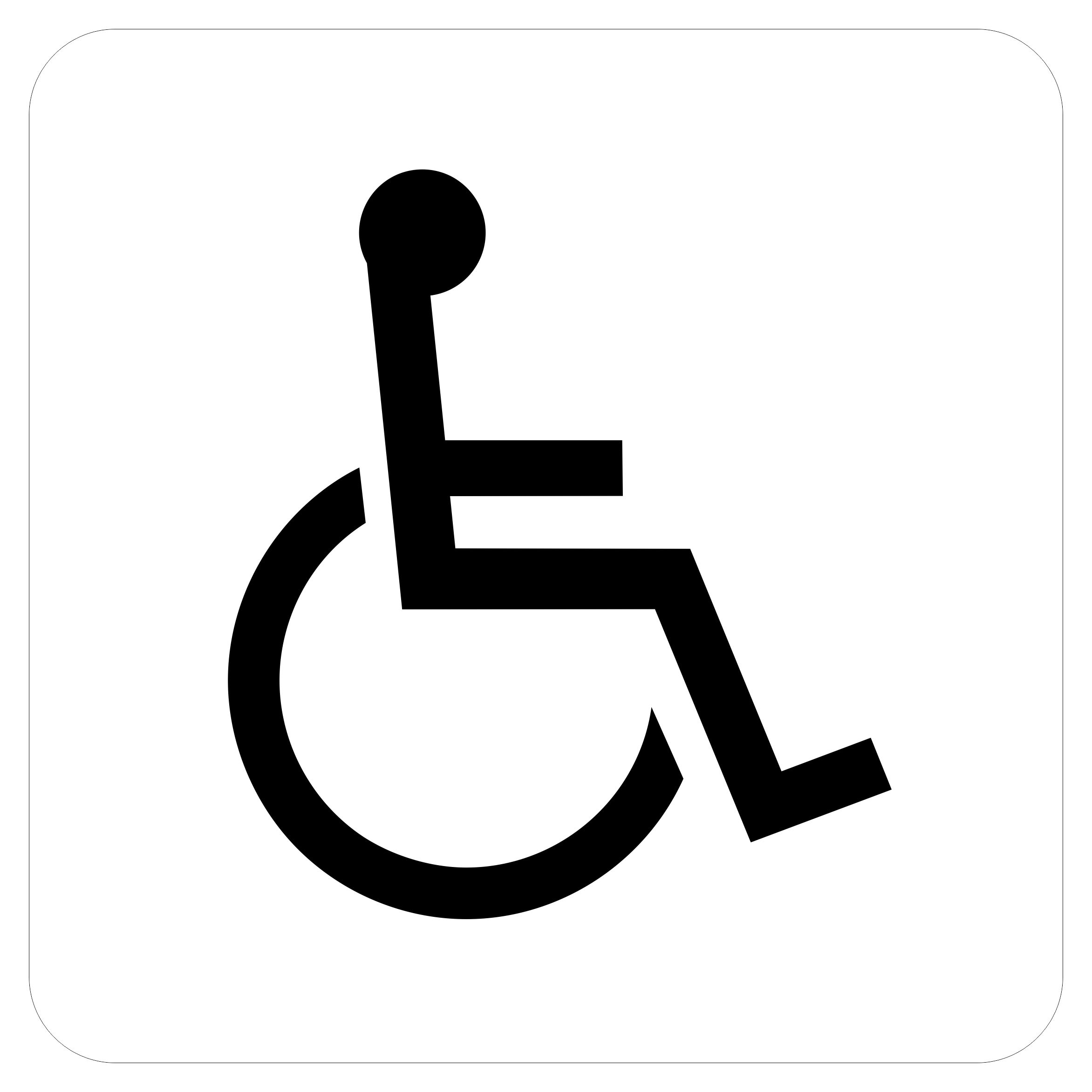Personalizing ADA Signs to Meet Your Details Needs
Personalizing ADA Signs to Meet Your Details Needs
Blog Article
Discovering the Trick Features of ADA Signs for Enhanced Availability
In the realm of access, ADA signs offer as silent yet powerful allies, making certain that areas are inclusive and navigable for individuals with specials needs. By integrating Braille and tactile aspects, these indicators break obstacles for the visually damaged, while high-contrast shade schemes and understandable font styles cater to varied aesthetic demands.
Relevance of ADA Compliance
Ensuring conformity with the Americans with Disabilities Act (ADA) is critical for fostering inclusivity and equal accessibility in public spaces and workplaces. The ADA, established in 1990, mandates that all public centers, companies, and transport solutions accommodate people with impairments, ensuring they delight in the exact same civil liberties and possibilities as others. Compliance with ADA criteria not just meets lawful commitments yet also boosts a company's reputation by demonstrating its commitment to diversity and inclusivity.
Among the key facets of ADA compliance is the execution of available signage. ADA signs are designed to make certain that people with specials needs can quickly browse via structures and areas. These indicators have to stick to specific guidelines pertaining to size, typeface, shade comparison, and positioning to guarantee presence and readability for all. Appropriately implemented ADA signs assists get rid of barriers that individuals with handicaps commonly run into, therefore promoting their independence and confidence (ADA Signs).
Furthermore, sticking to ADA guidelines can alleviate the risk of lawful repercussions and prospective penalties. Organizations that fall short to conform with ADA guidelines may encounter penalties or claims, which can be both economically challenging and harmful to their public photo. Therefore, ADA compliance is essential to fostering an equitable environment for every person.
Braille and Tactile Elements
The unification of Braille and tactile aspects right into ADA signage personifies the concepts of availability and inclusivity. It is normally put underneath the equivalent message on signs to ensure that people can access the info without visual support.
Tactile aspects extend beyond Braille and consist of increased icons and characters. These components are made to be discernible by touch, permitting individuals to determine room numbers, washrooms, leaves, and other vital areas. The ADA establishes specific standards pertaining to the size, spacing, and placement of these responsive aspects to enhance readability and make certain uniformity across various atmospheres.

High-Contrast Color Schemes
High-contrast color schemes play a pivotal role in boosting the exposure and readability of ADA signs for individuals with visual problems. These systems are essential as they make the most of the difference in light reflectance between text and history, guaranteeing that indications are conveniently noticeable, even from a distance. The Americans with Disabilities Act (ADA) mandates using certain shade contrasts to suit those with restricted vision, making it an essential element of compliance.
The efficiency of high-contrast shades hinges on their ability to stand out in numerous lights problems, consisting of dimly lit environments and areas with glow. dig this Generally, dark message on a light history or light message on a dark background is used to attain ideal contrast. As an example, black text on a white or yellow history provides a plain aesthetic distinction that helps in fast acknowledgment and comprehension.

Legible Fonts and Text Dimension
When thinking about the layout of ADA signage, the selection of readable typefaces and suitable text size can not be overstated. The Americans with Disabilities Act (ADA) mandates that font styles should be sans-serif and not italic, oblique, manuscript, highly ornamental, or of uncommon form.
According to ADA standards, the minimum text height ought to be 5/8 inch, and it needs to increase proportionally with seeing range. Uniformity in message size contributes to a natural visual experience, helping individuals in browsing atmospheres effectively.
Furthermore, spacing in between lines and letters is indispensable to readability. Ample spacing avoids characters from showing up crowded, boosting readability. By sticking to these requirements, developers can considerably improve access, making sure that signage serves its desired purpose for all individuals, regardless of their visual capabilities.
Reliable Positioning Techniques
Strategic placement of go to the website ADA signage is necessary for maximizing availability and making certain compliance with lawful requirements. ADA guidelines specify that signs must be installed at an elevation between 48 to 60 inches from the ground to ensure they are within the line of view for both standing and seated people.
Furthermore, indications should be placed nearby to the lock side of doors to enable very easy recognition prior to access. Consistency in indicator positioning throughout a facility boosts predictability, reducing complication and enhancing general user experience.

Verdict
ADA signs play a crucial function in promoting ease of access by integrating attributes that attend to the demands of people with impairments. These aspects jointly foster an inclusive setting, emphasizing the importance of ADA compliance in guaranteeing equal access for all.
In the realm of ease of access, ADA indications offer as silent yet powerful allies, ensuring that spaces are comprehensive and accessible for people with specials needs. The ADA, established in 1990, mandates that all public facilities, employers, and transport services suit people with disabilities, ensuring they appreciate the very same rights and chances as others. ADA Signs. ADA indicators are created to make certain that individuals with disabilities can conveniently navigate with areas and buildings. ADA guidelines specify that indications must be installed at a height in between 48 to 60 inches from the ground to guarantee they are within the line of view for both standing and seated people.ADA signs play an essential role in promoting accessibility by incorporating functions that address the demands of individuals with disabilities
Report this page